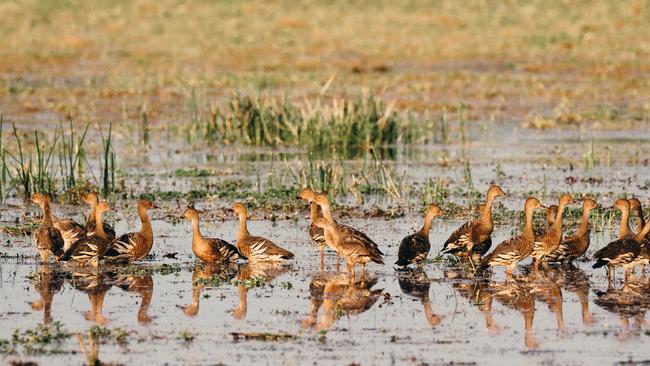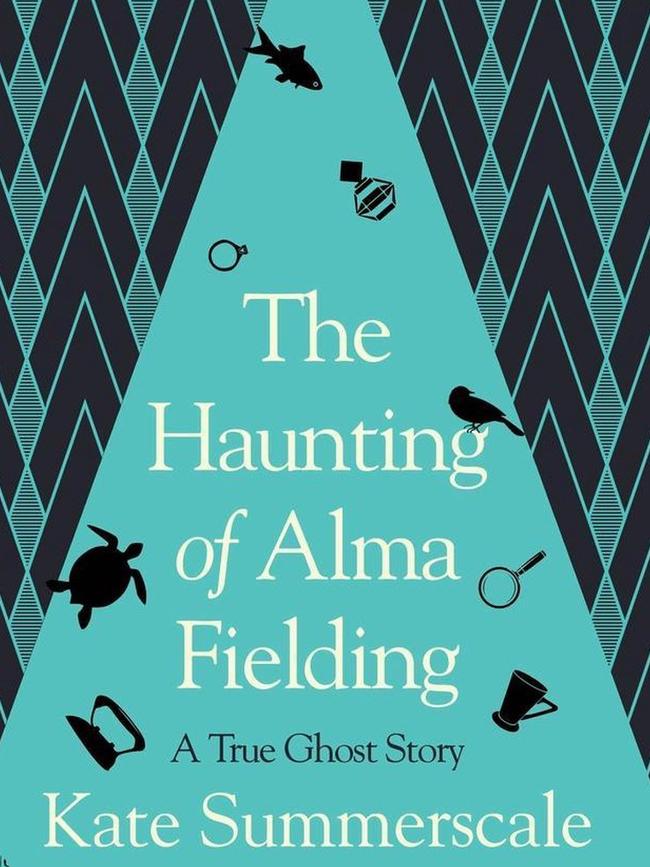Kakadu Bird Week takes the flock online
Kakadu Bird Week kicks off on Saturday and twitchers can flock to some of the action online.

Chestnut-quilled rock pigeons, banded fruit doves, white-throated grasswrens and Alligator Rivers yellow chats: they’re just a handful of the hundreds of bird species that call Australia’s largest national park home. In fact, Kakadu is so beloved by our feathered friends that about a third of all Australian bird species can be found there. Waterbirds include the iconic jabiru and brolga while the likes of blue-winged kookaburras and red-tailed black cockatoos favour the woodlands. Then there are varieties peculiar to the rocky escarpments of Ubirr and Nourlangie.
No wonder that twitchers armed with long-lens cameras and binoculars flock to the Northern Territory each year for Kakadu Bird Week, which kicks off today. Visitors cruise Yellow Water Billabong at sunset, venture into the Never Never to scour wetlands, and trek through the Burrungkuy monsoonal vine forest, all in the hope of ticking off their bucket list of birds.
This year, courtesy of COVID-19, enthusiasts unable to travel can have a sticky beak at some events on the national park’s Facebook page. Catch up on the latest research on the aforementioned yellow chat, which is endemic to the Top End, and on Australia’s rarest bird of prey, the red goshawk. Get an introduction to Kakadu’s birdlife and go spotting virtually with the cruisers on Yellow Billabong. And in a special cultural experience, viewers can “sit down” with the Indigenous students of Jabiru Area School as they cook traditional foods and talk about their relationship with the wetlands and their conservation work with scientists.
Kakadu Bird Week, until October 3; check website for event dates and times.
PENNY HUNTER
View from here

SHETLAND ( Series five)
ABC iView and streaming
Filming of series six of this well-received crime series has been delayed this year but it’s expected the next run of six hour-long and self-contained episodes will screen in 2021. There are rumours of a further series, too, also loosely adapted from the plots of seven novels by Ann Cleeves, set on the wind-battered main isle of the Shetlands archipelago off the northeast tip of Scotland. The landscape is so harsh and pervasive that it could almost be listed as a cast member, along with the blokey overcoat of Detective Inspector Jimmy Perez (Douglas Henshall), a garment as least as defining as Iain Glen’s great big garda coat in Jack Taylor.
The archipelago is home to about 23,000 permanent residents, with ring-ins on the ferries from Aberdeen to Lerwick, the main town, and summer flights from Bergen, Norway. But like those corpse-laden counties of Midsomer Murders, Shetland (the series) punches above its weight with criminals. Forget stolen milk bottles and missing sheep; make way for drug runners, kidnappers, random killers, smugglers and people traffickers.
Perez is ably assisted as the only cop in the village by Detective Sergeant Alison (Tosh) MacIntosh (Alison O’Donnell) and Detective Constable Sandy Wilson (Steven Robertson), and is susceptible to doomed affairs of the heart. Episodes in which the earlier husband of Perez’s (deceased) wife appear are particularly textured; that role is played with guile by Mark Bonnar, recently seen in the darkly funny Guilt on Foxtel’s BBC First.
Shetland (the island) has had a tourism boost since the eponymous series debuted in 2012, a lift likened to that experienced at Port Isaac, Cornwall, the real setting for the village of Portwenn in the perennially popular Doc Martin, starring Martin Clunes (nine series, and counting). Luckily, there’s been no concurrent rise in actual murders on Shetland. Henshall has been quoted as saying that if the corpse count were real across the past five series, Shetland would be, per capita, the 11th-most dangerous place on Earth.
SUSAN KUROSAWA
Spend it

British fabric, fashion and homewares entrepreneur Arthur Lasenby Liberty died in 1917, a year before the Spanish flu took the world in its deadly grip. One wonders what he would make of the current state of affairs but he would probably be impressed at how the brand that bears his name has pivoted (how has that word left the netball court and become such a part of our COVID lexicon?) in response. Liberty is selling packs of five colourful face masks in classic designs of upcycled Tana Lawn cotton. Made in Italy, the machine-washable coverings have two layers beneath the breathable and water-repellent exterior: an internal polyproylene filter to inhibit droplet transfer, and an anti-bacterial cotton lining that sits next to the face. The makers say the masks retain their specialist treatments for up to 20 washes. For each pack of five sold, one is donated to charity. £40 ($72) for a pack of five; international shipping available.
PENNY HUNTER
Book club
THE HAUNTING OF ALMA FIELDING: A TRUE GHOST STORY
Kate Summerscale
It was 1938 and for four years Jewish-Hungarian journalist Nador Fodor had been “chief ghost hunter” at the International Institute for Psychical Research in London, a role that required him “to investigate and verify weird events”. Spiritualism had become “big business” in Britain since the multitude of deaths in the Great War.
“Thousands of ... seance circles” were established by relatives of the deceased; such a gathering was “a voluntary haunting, a summoning of ghosts, at which the dead would speak through trumpets or directly through mediums, rap on tables and blow cold breezes ...” Fodor was “amazed” by what he witnessed. He investigated the likes of levitations, spirit possession and materialisations, unmasked various “hoaxers” yet tried to find “a middle way” between spiritualism and scientific approaches to the supernormal.

Then along came Alma Fielding, a 34-year-old, moderately well-off housewife who lived in the borough of Croydon, with her husband, their son, a lodger and an apparent poltergeist. The Sunday Pictorial published an account of eggs flying along corridors and cracking against sideboards, saucers spinning and splintering in mid-air, coal rising from the fire grate and sailing across the room, inches from a journalist’s head. Speculation ran riot. Fodor was “gripped” and interceded on behalf of the Institute. Could this be a case of “kinetic forces unleashed by the unconscious mind”? Or did it speak of repressed childhood trauma?
Kate Summerscale’s narrative is based on this real case of the “Croydon poltergeist” and it gallops along with all the force of a plot-driven novel. Was Alma genuinely possessed or the perpetrator of a “wild, months-long magic-realist extravaganza”? Had Fodor “staked more on Alma than on any psychic subject” only to be duped? Doubts about her authenticity mimicked “wider anxieties about the dissolving borders in Europe” as the threat of a second world war loomed. As Hitler assumes power and Fodor’s career is at stake, it becomes a race to the final chapters to discover the truth.
SUSAN KUROSAWA

To join the conversation, please log in. Don't have an account? Register
Join the conversation, you are commenting as Logout